Asahi Kasei’s Wire Grid type WGF™ CAMERA FILTER covers wideband imaging from CMOS to InGaAs.
What the Filter Can Do
When light is reflected on an object, its polarization state modifies. It is feasible to preferentially inhibit reflected light that interacts with imaging by using a polarizing filter.
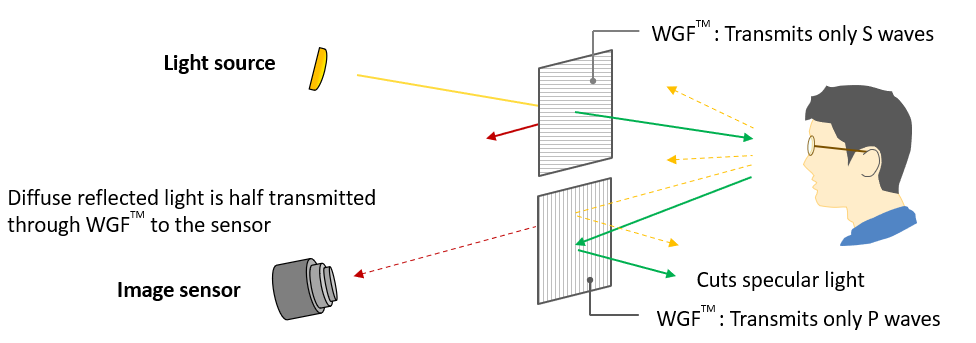
Image Credit: Asahi Kasei Corporation
Polarization Filter for Infrared Cameras
WGF™ Camera Filter
The WGF™ camera filter can be connected to the camera lens unit as usual and the user can start to use it right away. It is capable of wideband imaging from CMOS to InGaAs.
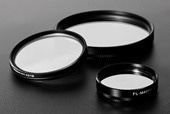
Image Credit: Asahi Kasei Corporation
| . |
. |
| Flexible structure |
A convenient double structure with a fixed frame that can be attached to a lens as it is and a rotating frame that allows you to freely adjust polarization axis. Both are same diameter size. |
| Filter Diameter Lineup |
M40.5 M46 M52 M55 M58 M77 mm
Lineup of 6 types. Applicable to most sizes with step-up rings. |
| Coating |
The filter part has a two-layer structure of wire grid film and glass, and is not AR coated. It is environmentally reliable because the wire grid layer is not exposed to outer. |
| Optical Performance |
Single Transmittance: 39.98%
Extinction Ratio: 1,500
*Average at 850-1,800 nm
* These data are reference values

* These data are reference values
|
| Option |
Please contact us for special size and polarizing filters for light sources. You can get better anti-reflection effect by using WGF™ for both light source and camera. |
Solution Examples
Observation of reflected light
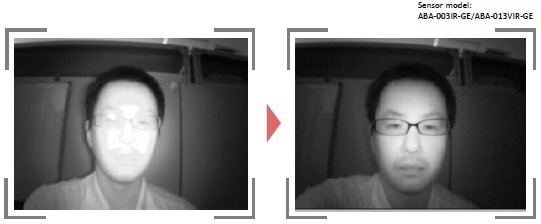
Imaging a face wearing glasses. Image Credit: Asahi Kasei Corporation
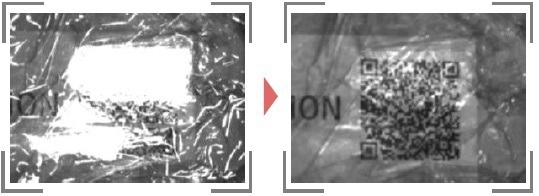
Reading QR code through wrapping film. Image Credit: Asahi Kasei Corporation
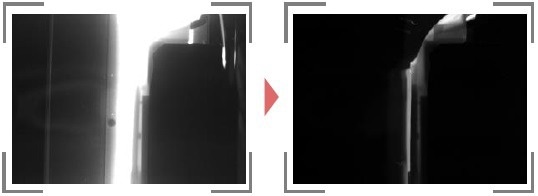
Transmission inspection inside the printer ink tank. Image Credit: Asahi Kasei Corporation
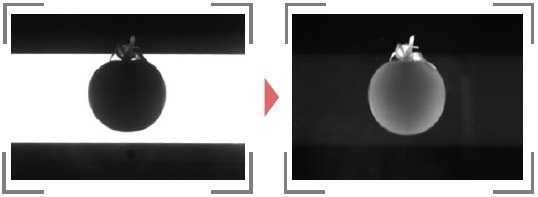
Transmission inspection of perishable foods. Image Credit: Asahi Kasei Corporation
There is no need to give up detection, such as transparent contamination or extraordinal part, as the image inspection with WGF™ camera filters and InGaAs sensors detects things like transparent contamination and extraordinal parts that would otherwise go undetected.
Polarization can also be used to identify contaminants in opaque containers and contaminants of the same color as liquids.
Numerous resins exhibit a phase-contrast effect. When two WGF™s are placed as cross nicole status in front of the light source and sensor, the light from the light source cannot contact the sensor, whereas the light whose polarization axis is rotated or depolarized by the resin features can meet the sensor.

Image Credit: Asahi Kasei Corporation
Solution Examples
Transmitted Light Observation

Detection of a resin fragment in an opaque bag filled with water. Image Credit: Asahi Kasei Corporation

Detection of resin fragments in liquid. Left bottle) water, right bottle) coffee.Image Credit: Asahi Kasei Corporation
WGF™ camera filter is an innovative product that can be bought for trial.
Polarizer for High Intensity Polarized Lighting
When used for high-intensity polarized lighting, traditional polarizers become disfigured or broken. WGF™ is compatible with high-intensity halogen lighting.
Moreover, by successively using the reflected light on WGF™, the brightness can be increased.
WGF™ panels that can polarize the light source are also available. In observation using polarization effect, polarized light sources are crucial point. By polarizing light source with WGFTM Panel, you can observe the images more effectively.Consider it as a series for use with the WGFTM camera filter.In addition to standard models, we are capable of offering customization, such as for ring lights.

WGF™ panel for a polarized light source with WGF™ sheets laminated on glass.Image Credit: Asahi Kasei Corporation

This information has been sourced, reviewed and adapted from materials provided by Asahi Kasei Corporation.
For more information on this source, please visit Asahi Kasei Corporation.